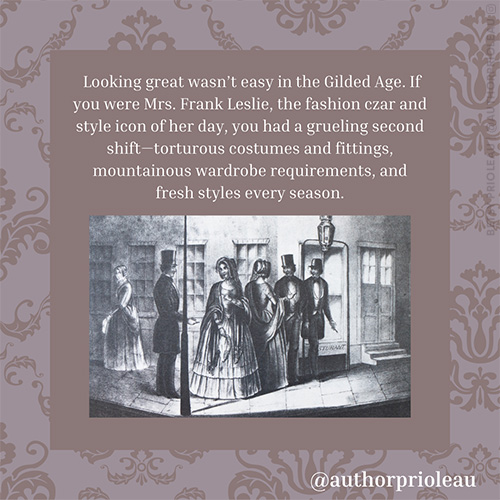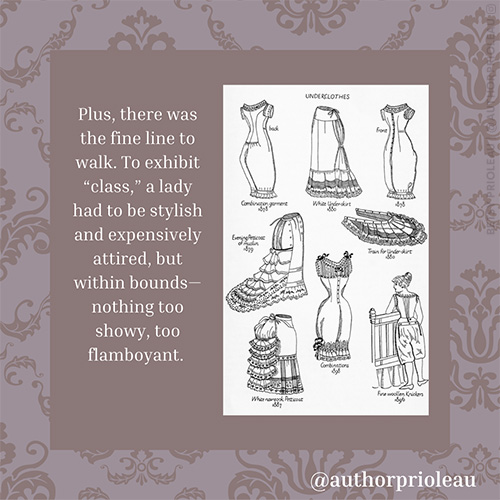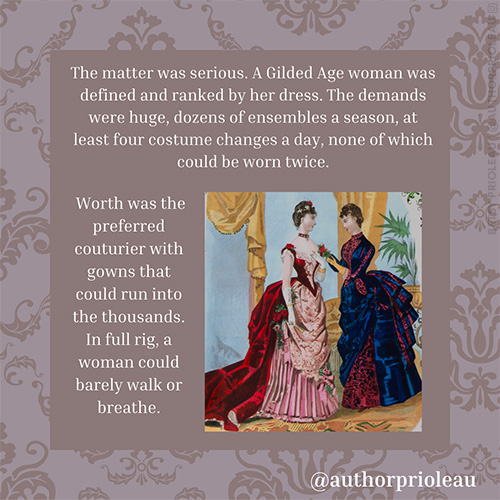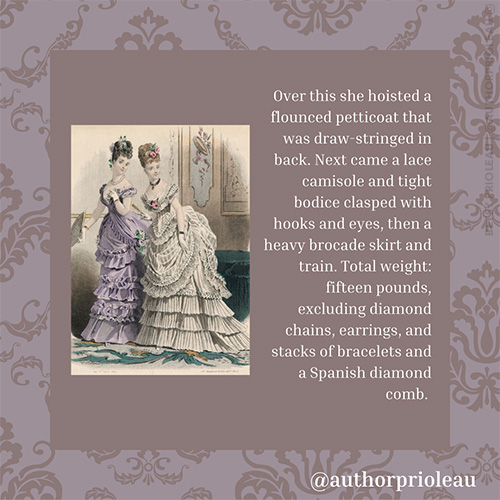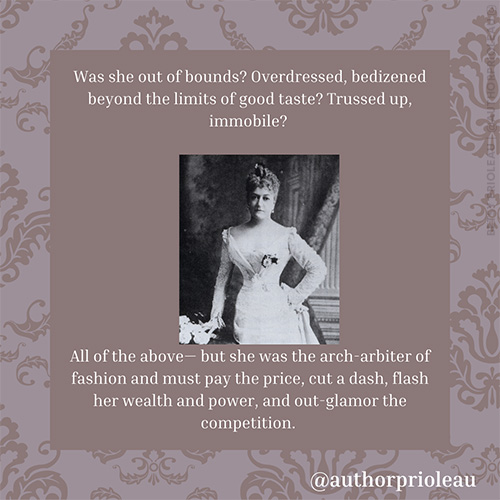Looking great wasn’t easy in the Gilded Age. If you were Mrs. Frank Leslie, the fashion czar and style icon of her day, you had a grueling second shift—torturous costumes and fittings, mountainous wardrobe requirements, and fresh styles every season. Plus, there was the fine line to walk. To exhibit “class,” a lady had to be stylish and expensively attired, but within bounds—nothing too showy, too flamboyant.
The matter was serious. A Gilded Age woman was defined and ranked by her dress. The demands were huge, dozens of ensembles a season, at least four costume changes a day, none of which could be worn twice. Worth was the preferred couturier with gowns that could run into the thousands. In full rig, a woman could barely walk or breathe.
Mrs. Leslie began her preparations for a typical salon evening with a brutal piece of combat armor, a swan-billed, embroidered corset with a dozen grommets, a curved busk (an early push-up bra), and elastic harness with a belaying pin that squeezed waists into a desired twenty-two inches.
Over this she hoisted a flounced petticoat that was draw-stringed in back. Next came a lace camisole and tight bodice clasped with hooks and eyes, then a heavy brocade skirt and train. Total weight: fifteen pounds, excluding diamond chains, earrings, and stacks of bracelets and a Spanish diamond comb.
Was she out of bounds? Overdressed, bedizened beyond the limits of good taste? Trussed up, immobile? All of the above but she was the arch-arbiter of fashion and must pay the price, cut a dash, flash her wealth and power, and out-glamor the competition.
Learn more about Miriam’s life and New York City in the Gilded Age in Diamonds and Deadlines: A Tale of Greed, Deceit, and a Female Tycoon in the Gilded Age
Available March 29, 2022
(This text content is a transcript of the images above)


